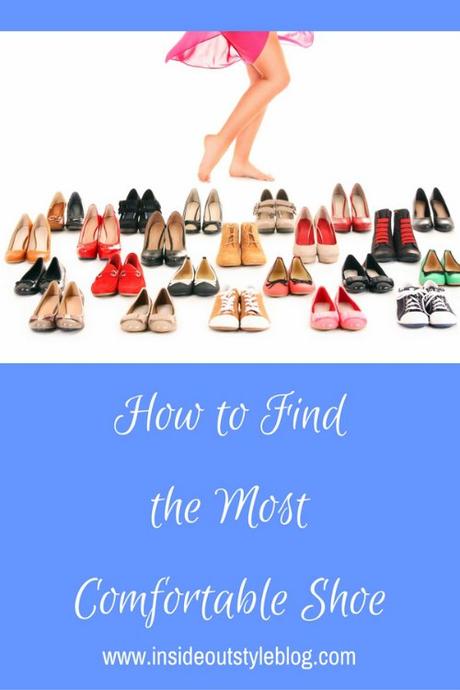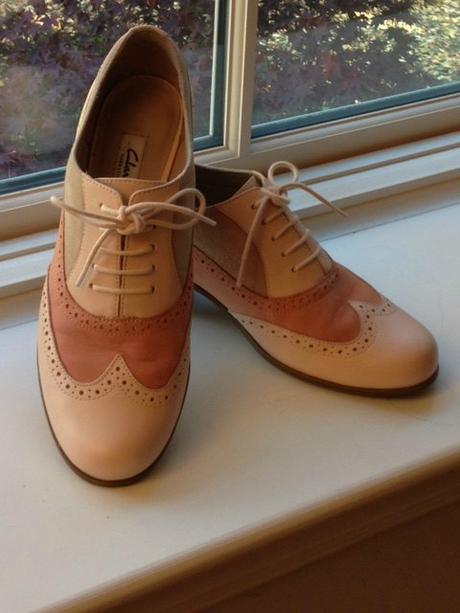Understanding Supportive Shoe Wear
by Debra Coglianese, DPT, OCS, ATC
In my physical therapy practice it generally does not take long before the discussion turns to shoe wear - specifically, supportive shoes. And, believe it or not, the easiest way to talk about feet and shoes is to talk about eyes and eyewear first.
Some people have perfect eyesight. They have no need for prescriptive lenses - or frames which hold the lenses in the most effective position. People with perfect eyesight may benefit from protective eyewear - sun glasses or safely glasses - in certain situations. Wearing frames with clear glass lenses could be a choice just for the look.
At the other end of the continuum, there are those who cannot function without putting on a pair of glasses with prescriptive lenses. Cannot. Function. Without glasses.

Everyone else fits on the continuum between the two examples above. Some wear glasses but may choose not to when attending a special event. (Of course, if they are a presenter at the Oscars then he/she has to temporarily put glasses on to read the teleprompter/cue cards!) Some wear glasses only to read.

You get the idea...some people have wide open options on whether to wear frames while others have no other option. And, these examples have not factored in the variables introduced by wearing contacts.
Feet and shoes are a similar situation. Some people have well aligned, balanced feet with great supporting musculature. Wearing shoes becomes more a protection garment with no limits on style, fashion, etc.
Then others, through no fault of their own, need orthotics to balance the foot, with the assistance of supportive shoes. (This is important to note - altered foot alignment, similar to eye shape, is not anyone's fault!) Balanced feet then assist to keep legs, knees, thighs and hips in the best alignment. Some need firm orthotics, some soft and any variation in between. The difference is, however, that shoe wear becomes prescriptive - not any shoe will do. The shoe has to provide enough support to hold the foot on the orthotic for the best outcome - much as glasses frames hold prescriptive lenses in optimal position for vision correction.
The rest of us, who may not require orthotics, can still benefit from supportive shoes - especially for activities when we are on our feet more than usual. To assess whether a shoe is a good choice, ask yourself two questions.
After trying on the shoes and walking around the store, ask yourself, "Does the shape of the shoe match the shape of my foot?

Shoes are cut on different lasts. Some shoe lasts are slightly wider in the forefoot than the rearfoot - sometimes described as a European last. American shoes have often featured a more parallel last. This has been changing over the years but this basic aspect of shoe shape needs to be considered. Other construction features related to fit are the height of the toe box, materials used, cushion in the foot bed, etc.
So, how do you know if the shape of the shoe matches the shape of your foot? Simple, ask yourself if your foot fits comfortably in the shoe. If not, you are better off looking at other choices.
If the shoe shape does seem to be a good match for your feet, then you are ready to move onto the next question, "Does the shoe support me?"
You figure this out by standing on one foot. If the shoe is providing support then you will notice that your foot wobbles less when wearing the shoe than standing on one foot without. The shoe should make you feel a bit more stable. Sometimes a supportive shoe can make the difference for someone of being able to stand and balance on one foot when, without a shoe, this is not possible.
So, why does standing on one foot matter? At one point in the gait cycle, you stand on one foot while the other leg advances and gets ready to take the next step forward. If your foot is more stable and balanced, your leg (knee, thigh and hip) are better aligned. And, though some people can use strong foot musculature to aid foot alignment, wearing a supportive shoe means less reliance on those muscles. Ultimately, leg muscles become less fatigued. Joints are happier.
Generally, a lace-up shoe provides more support. On a fashion blog, this statement is probably a cue for groans. So consider this, if your feet still allow you to have options for your shoe wear then offer your feet support when wearing renovation clothes, or when on a full day's outing. Then, your feet may have a bit more life in them when it is time to party!
Read more about finding shoes that fit orthotics here.Debra Coglianese, DPT, OCS, ATC has thirty years of experience treating patients with musculoskeletal complaints and injuries in the USA. Dr. Coglianese lead a team of 22 authors in her role as the editor, and contributor, for the textbook, Clinical Exercise Pathophysiology for Physical Therapy published in 2014 by SLACK Inc.
